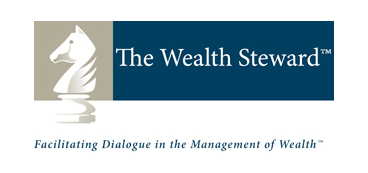By Adam Laird on November 30, 2023
 Regardless of how you acquired your wealth, there’s one thing all investors have in common—a desire to make sure their wealth will be sustainable and able to meet their needs over time. But what if your needs change? What if the initial portfolio structure and risk profile changed significantly due to market and economic changes? Are you monitoring your portfolio performance to make sure it continues to meet your financial goals?
Regardless of how you acquired your wealth, there’s one thing all investors have in common—a desire to make sure their wealth will be sustainable and able to meet their needs over time. But what if your needs change? What if the initial portfolio structure and risk profile changed significantly due to market and economic changes? Are you monitoring your portfolio performance to make sure it continues to meet your financial goals?
In this blog, we look closer at the importance of portfolio monitoring. We start by discussing the importance of an Investment Policy Statement (IPS) before turning our attention to the questions of how success should be measured and how portfolios should be reviewed.
The Role of an Investment Policy Statement (IPS)
An IPS is a document drafted between an advisor and you, the client, which is used to outline your investment plan, providing a roadmap to success and a barrier against decisions that go against your wishes or could adversely affect your wealth.
Though the structure and length of an IPS will vary, it should address topics like:
- The goals and objectives you have for your wealth.
- Any specific timelines that need to be taken into account.
- Your tolerance for risk.
- Performance objectives for your portfolio and how they should be measured.
- Asset classes your portfolio should be invested in and how, when necessary, they should be rebalanced.
- How frequently you and your advisor will review the IPS.
Remember that your IPS is a living document intended to reflect your unique financial goals. Your advisor should review it with you on a routine basis to ensure your objectives and risk tolerances haven’t changed, and your portfolio should always be monitored in accordance with it.
Measuring Your Portfolio’s Success
Your portfolio needs to be measured against two dimensions—its structure and its performance.
The Structure of Your Portfolio
- What asset classes does your portfolio include (equity, real estate, fixed income, etc.)?
- From what geographic areas are securities accessed (Canada, U.S., international, etc.)?
- What investment mandates comprise the portfolio (Canadian equity, U.S. mid-cap, Canadian Corporate Bond, etc.)?
- What investment strategies are being used (long-short, long only, active, passive, etc.)?
- What investment managers (including the advisor where applicable) are used and how much of the portfolio have they each been allocated?
- What investment vehicles are currently used within the portfolio by each Investment Manager? What constraints have been placed around each type?
Assessing Performance Using Goals-Based Benchmarks
Benchmarking is meant to answer one simple question: has your portfolio been successful?
Our industry has traditionally favoured the use of relative, index-based benchmarks that measure the success of your portfolio against external factors like how the market or your peers are performing. Unfortunately, this framework can have a variety of negative implications (missed funding requirements, depleted capital, and exposure to too much risk) that may threaten the long-term sustainability of your wealth.
Goals-based benchmarking is an approach that takes your financial and lifestyle objectives into account, evaluating performance based on whether or not your wealth enables you to meet your needs.
Relative vs. Absolute Benchmarking – Debunking the Investment Industry in Canada
One of the most persistent myths perpetuated by investment managers is that investors’ portfolios’ performance should be measured compared to a relative, market-based benchmark. How your portfolio’s performance is judged – the benchmark against which it is being measured – can completely change the way your portfolio is structured.
Reviewing Your Portfolio to Keep You on Course
Reviews play a crucial role in ensuring your portfolio continues to meet the needs for which it was designed.
The three types of reviews that should be carried out on a routine basis are:
- Goals Reviews: These provide both you and your financial advisor with an opportunity to discuss changes to your own financial or lifestyle circumstances that may impact your investment goals and strategies.
- Portfolio Reviews: This type of review looks at how your portfolio is performing in relation to your goals and risk tolerances.
- Policy Reviews: These cover adjustments that may need to be made to your IPS or portfolio structure, including any rebalancing your financial advisor feels may be prudent.
Creating wealth that is truly sustainable requires diligence and perseverance. Ultimately, working with a firm like HighView committed to structuring a goals-based portfolio and monitoring it on an ongoing basis to make sure it stays on track will give you the long-term financial stability you seek.
HighView is an experienced portfolio management firm for affluent Canadian families and foundations. We would be happy to discuss our goals-based investment approach with you and your professional advisors.
You may also be interested in:
- Mitigating Volatility to Create Sustainable Family Wealth
- Cannabis Stocks: Worth the Hype or Likely to Send Your Wealth Up in Smoke?
- Due Diligence Can Distinguish Good from Bad Money Managers
- Family Home – Downsizing with 5 Crucial Steps [Video] - November 20, 2024
- Portfolio Design is Crucial. Here’s Why. - October 2, 2024
- Portfolio Design: How this Matters Greatly - July 17, 2024



